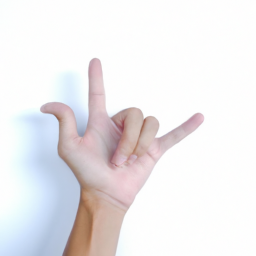The sign language for the word “drink” is made up of two parts: a handshape and a movement. The handshape is done by placing the thumb, fingertips and last three fingers of one hand together while keeping the index finger extended in a pointing gesture. This index finger should be held parallel to the floor and slightly bent inwards towards the palm. The movement involves extending an arm with this handshape at waist level and then bringing the extended arm up to your mouth as if drinking from an invisible cup or glass.
Drinking is an important part of life for many around the world, so it’s no surprise that there are several signed versions of drink. In American Sign Language (ASL), drink has two different meanings. The first meaning is to ingest liquid through your mouth (the same action as using one’s hands when drinking). The other meaning is to consume alcohol, which has its own unique sign (see below).
When signing drink in ASL, you can use either a single-handed or double-handed version depending on your preference or need. For example, if you are talking about drinking water, you would use one-handed version with the pointer finger extended outwards towards the cup or glass that you are holding while bringing your arm up towards your mouth. If you were discussing drinking alcohol (usually beer), then you would use both hands with palms facing downwards and thumbs touching each other before moving them away from each other as if drinking from a can of beer or bottle.
In addition to these traditional signs for ‘drink,’ there are also some regional variations used in various areas around the globe that may be used for various contexts such as drinks like coffee, tea, juice etc., The most common variation includes using both hands with palms facing outwards before connecting them with fingers interlocked followed by bringing them close to one’s lips as if drinking from an invisible cup or glass.
Overall, ‘drink’ is an important word that has multiple usages within sign language depending on context and geography. Thus, understanding how to use it correctly will help ensure successful communication between users of ASL and any other signed languages related to it across different regions in the world.

Leave a Reply